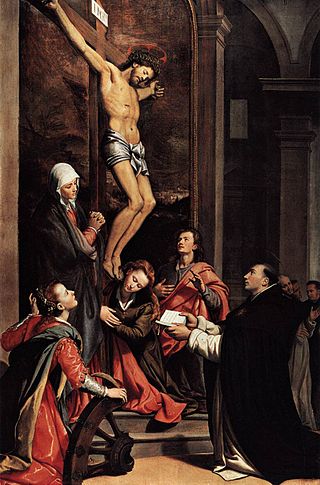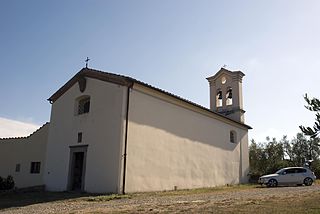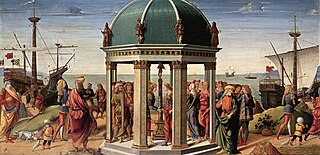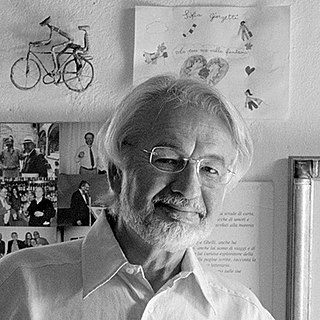

Tito Chelazzi (1 March 1834, San Casciano in Val di Pesa - 12 April 1892, Florence) was an Italian still-life painter and war hero.


Tito Chelazzi (1 March 1834, San Casciano in Val di Pesa - 12 April 1892, Florence) was an Italian still-life painter and war hero.
His parents were the heirs of a wealthy family from Siena. At first, he planned to become a doctor, but soon left medical school to devote himself entirely to painting. He began by taking lessons from a local artist named Alessandro Martini, then enrolled at the Academy of Fine Arts in Florence. When Martini was engaged to help restore a 13th-century painting of the Annunciation at the Basilica della Santissima Annunziata, Chelazzi became his assistant. His first solo works were images of the Madonna for the chapels of several villas in Florence and San Casciano.
In 1859, he enlisted with the 18th regiment of Bersaglieri to fight for Italian independence. When he returned he found a position in the studios of Stefano Ussi, who later became a close friend. In 1861, he had his first exhibit, together with Ussi, at the "National Arts and Crafts Exposition" in the Stazione Leopolda . In 1866, at the beginning of the Third Italian War of Independence, he enlisted in a unit led by Colonel Menotti Garibaldi. He fought in the Tyrolean Campaign and barely escaped death at the Battle of Bezzecca. [1]
Returning to Florence once again, he opened a studio on the Via degli Artisti near the Piazzale Donatello, specializing in still lifes; especially flowers and fruits. His floral subjects proved to be very popular with the noble ladies. His best known regular client was Margherita of Savoy, who paid 500 Lire (then a substantial amount) for a painting of daisies, and then, honouring the painter by paying a visit to his studio, commissioned other works, notably a mirror with painted roses thea. Other noble patrons included the Royal Family of Württemberg, who commissioned floral decorations for cabinets, doors and windows; and Duchess Marie of Mecklenburg-Schwerin, [2] for whom he decorated mirrors that are now in the ballroom of Vladimir Palace. The Duchess of Teck (mother-in-law to George V) when in Florence (June 1884), also visited Chelazzi's studio as she writes in her diary " In the town, we met Oasperi, who drove with us to Chelazzi's studio to see his flower painting on mirrors" (4)
Despite his connections to high society, he remained shy and humble. In 1888, when he was appointed Knight of the Order of the Crown of Italy, he politely declined the honor.[ citation needed ] During the following years, his health steadily worsened and he found it increasingly difficult to fulfill all the commissions that came his way. In 1891, he was engaged by the Milanese publisher Fratelli Treves to produce illustrations for the four volume "Book of Flowers", but he was able to finish only the Spring volume before his death. [3]

Santi di Tito was one of the most influential and leading Italian painters of the proto-Baroque style – what is sometimes referred to as "Counter-Maniera" or Counter-Mannerism.

Cassian, or Saint Cassian of Imola, or Cassius was a Christian saint of the 4th century. His feast day is August 13.

Sant'Andrea in Percussina is a frazione of San Casciano Val di Pesa in the Metropolitan City of Florence, Tuscany, Italy.

Ugolino di Nerio was an Italian painter active in his native city of Siena and in Florence between the years 1317 and 1327.

San Casciano in Val di Pesa is a comune (municipality) in the Metropolitan City of Florence in the Italian region Tuscany, located about 15 kilometres (9 mi) southwest of Florence.

Scandicci is a comune (municipality) of c. 50,000 inhabitants in the Metropolitan City of Florence in the Italian region Tuscany, located about 6 kilometres southwest of Florence.

Michele Tosini, also called Michele di Ridolfo, (1503–1577) was an Italian painter of the Renaissance and Mannerist period, who worked in Florence.

Jacopo di Cione was an Italian Gothic period painter in the Republic of Florence.

Enrico Pollastrini was an Italian history painter and art school director.

Biagio d’Antonio Tucci was an Italian Renaissance painter active in Florence, Faenza and Rome.

Bastiano di Bartolo Mainardi was an Italian painter of the Early Renaissance. He was born in San Gimignano and was active there and in Florence.

Augusto Giacometti was a Swiss painter from Stampa, Graubünden, cousin of Giovanni Giacometti who was the father of Alberto, Diego and Bruno Giacometti. He was a prominent as a painter in the Art Nouveau and Symbolism movements, one of the first abstract painters, for his work in stained glass, as a proponent of murals and a designer of popular posters.

Piero or Pietro Vettori was an Italian writer, philologist and humanist.
The Villa di Murlo is a rural palace or villa located in the hills surrounding San Casciano in Val di Pesa, on the old road between Florence and Siena that follows the Pesa River.

Nicolò Barabino (1831–1891) was an Italian academic painter of religious and historical subjects, active in Florence and Genoa.
Andrea Picchi, was a well-known ebonist who framed works of art for aristocratic clients. For Grand Duchess Olga Nikolaevna Romanova, he framed a pair of tondi after paintings by Fra Angelico, executed by Diomede della Bruna, a Florentine painter born in 1839. He also framed for Umberto I and his wife Queen Margherita of Savoy,two works by Tito Chelazzi - an oil painting of daisies and a mirror the royal couple had commissioned from this painter, he too a sought after artist by European royal families. After some years in Via della Vigna Nuova, Picchi moved to Via Maggio,28, where he developed his artistry in carving ebony, a dense yet fine textured black wood. But his masterpiece in carving would be the exceptionally beautiful ebony and ivory cabinet in the style of the Italian Renaissance Picchi presented in the 1867 Paris Exhibition, though with "a marked similarity in this design to that of a 17th century cabinet(...)"as Frederick Litchfiel points out in his History of Furniture. In fact, when comparing the pictures of the two cabinets in Litchfiel's book, one may doubt if it is a mere coincidence or not. Nevertheless Picchi's cabinet remains a jewel of carving and an example of mastering ivory and ebony. Now in oblivion, only his oval stamp on the verso of some ebony framed works of the 19th century calls out "Andrea Picchi, ebanista, Via Maggio, No. 28, Firenze".

The Pieve of San Pancrazio is a romanesque-style, Roman Catholic church in San Casciano in Val di Pesa in the Province of Florence in the Italian region Tuscany.

Anton Domenico Bamberini (1666–1741) was an Italian painter, mainly of religious Baroque frescoes in churches completed in a heavily ornamented and stuccoed trompe-l'œil frames and settings.

Giuliano Ghelli was an Italian painter who produced several series of works, each rooted in the practice of drawing. An autodidact, Ghelli's early influences were informalism and geometric abstraction, from which he developed a cartoon-like style of figuration inspired by pop art and Surrealism. Ghelli was said to draw on affect over intellect, working personal interests and relations, and, later, dreams into his pictures; the Italian word racconto often appears in the artist's titles.
4."A memoir of Her Royal Highness Princess Marie Adelaide,duchess of Teck;based on her private diaries and letters",vol 2 (of 2) revisited by Sir Clement Kinloch-Cooke, Forgotten Books (23 Aug. 2012)
![]() Media related to Tito Chelazzi at Wikimedia Commons
Media related to Tito Chelazzi at Wikimedia Commons